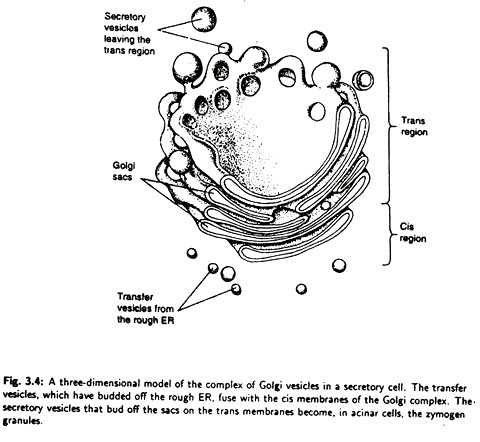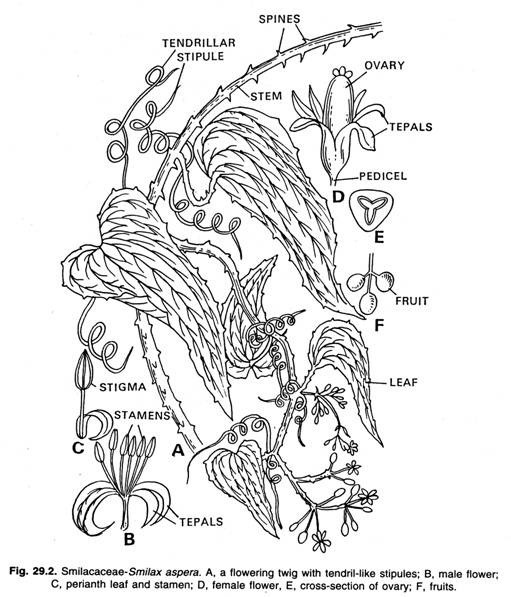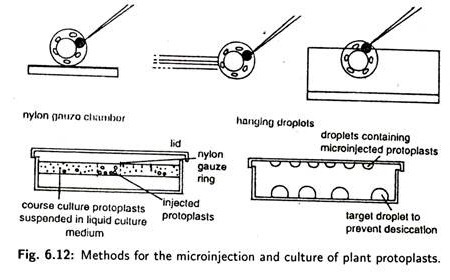The conversion of energy from one form into another is called transduction. An example of transduction is the conversion of light energy (electromagnetic radiation) into potential chemical bond energy in such seemingly diverse processes as photosynthesis and vision.
The conversion of chemical bond energy into light energy (i.e., transduction in the opposite direction) occurs in bioluminescence (e.g., the emission of light by fireflies and by certain microorganisms, see Fig. 9-5).
Electromagnetic radiations consist of far more than just the spectrum of colors perceived by the human eye.
 Each of the radiations of the electromagnetic spectrum (Table 9-5) can be thought of as a stream of moving packets of energy called photons.
Each of the radiations of the electromagnetic spectrum (Table 9-5) can be thought of as a stream of moving packets of energy called photons.
The stream of photons has the character of a wave (Fig. 9-6) in which the distance from any point on the wave to an equivalent point on the neighboring wave is the wavelength. Among the differences between the radiations of the electromagnetic spectrum are differences in wavelength.
At one extreme are the long waves, such as radio and television waves, which have wavelengths up to 1000 m. At the opposite end of the spectrum are the X rays and gamma rays, which have wavelengths of 0.1 x 10-9 to 0.1 x 10-12 m. Most of the biologically important wavelengths are shorter than 10-6 m. In air, each photon travels at the same velocity, namely, 3 x 108m/sec.
The energy of radiation is said to be quantized; that is, it has specific values or quanta. Quantum energy is related to wavelength by Planck’s Law:
q = hv = hc/λ
Where q is the quantum energy in joules, h is Planck’s constant (6.624 x 10-34 J sec), v is the frequency of the radiation, c is the velocity of light, and X is the radiation’s wavelength (in meters). It may be seen from this equation that radiations of shorter wavelength possess more energy than radiations of longer wavelength.
It should be noted that there are a number of forms of radiation that are not electromagnetic but are particulate. Particulate radiations include the alpha rays and beta rays that are emitted from the nuclei of radioactive isotopes.
When radiation passes through a substance, some (perhaps all) of the energy of the radiation is absorbed by certain electrons of the atoms and molecules comprising the substance. The energy of each photon is either totally transferred to an electron or none of the photon energy is transferred. That is, with regard to a specific electron, either all or none of the photon energy is absorbed.
Moreover, the Einstein-Stark Law of photochemical equivalence demands that the absorption of one quantum of light energy results in the activation of one atom (or one molecule). The absorption of light energy by an atom or molecule often involves a shift of an electron from one orbital to another. Each electron possesses energy, the amount of which is determined by the location of the electron orbital in space and the speed at which the electron moves.
Absorption of light energy either raises an electron to an orbital of higher energy or accelerates the electron within its orbital. Electrons may occur in pairs within an orbital, the members of the same orbital spinning in opposite directions. Most atoms at their lowest energy level (i.e., the ground state) have all of their electrons paired in this fashion. When the absorption of light energy raises an electron to a higher, unoccupied orbital, the electron may continue to spin in the direction opposite to its former partner or it may spin in the same direction as its former partner.
Because the energy of radiation varies with wavelength, and because the transfer of energy takes place in quantum units, it is evident that only certain wavelengths will excite specific atoms in a molecule. If the quantum transfer is great enough, the electron may altogether escape from the atom, and the atom (or molecule) would therefore be ionized. Radiations of very short wavelengths (e.g., gamma rays and X rays) cause appreciable ionization when they pass through cells and tissues.
Atoms containing electrons that have been boosted to higher orbitals are intrinsically unstable and frequently return (in less than 10-9 seconds) to their ground state as the electrons move again to their former orbitals. The gain in energy that boosts an electron to a higher orbital is called a primary action, whereas the release of energy during the return of an electron to a lower orbital is called a secondary reaction.
During the secondary reaction, the energy that is released may be transferred to neighboring molecules or may take the form of light (i.e., fluorescence) or heat. The transfer of energy to neighboring molecules during a secondary reaction underlies such biological mechanisms as vision and photosynthesis.
Vision:
The photoreceptor ceils of vertebrate eyes (called rods and cones) contain a number of pigment molecules (carotenoids) that are excited by light. Among these, rhodopsin, a pigment in the rod cells, has been well studied. The pigment consists of a protein called opsin and retinal, a compound related to vitamin A.
The rhodopsin molecules are localized in the outer segment of the rod cells (Fig. 9-7) in disks formed by stacks of intracellular membranes. When light energy of the appropriate wavelength is absorbed by rhodopsin, the retinal changes from the cis to the Trans isomer (Fig. 9-8).
This change or bleaching alters the bonding between the retinal and the opsin, causing the eventual release of the retinal from the protein. The bleaching of the rhodopsin releases cyclic GMP that in turn alters the permeability of the outer segment disk membranes to cations such as Na +, Ca2 +, and K + and brings about a change in electrical potential across the rod cell’s plasma membrane. As a result, a transmitter substance is released by the inner rod segment and this serves as a chemical stimulus for nerve cells that lead from the rods to the brain.
Other Kinds of Transductions:
Cells frequently utilize potential chemical energy such as that in ATP to move permeable solutes through their membranes in a direction that is against the solute’s concentration gradient.
The solute concentration gradient that is created by a transport mechanism may itself serve as a potential source of energy. Mitochondria generate an ion gradient across their membranes and this gradient is believed to serve as an energy source for the phosphorylation of ADP.
In nerve cells, there is the selective transport of Na + and K + across the plasma membrane against the concentration gradients of these permeable ions, and this serves to create an electrical potential across the membrane. The establishment of this potential underlies the capability of nerve cells to propagate impulses.
The potential chemical energy inherent in ATP is used in muscle cells to bring about the sliding of protein filaments past one another during contraction. Muscle contraction is therefore a vivid example of a transduction in which chemical energy is transformed to mechanical energy.



